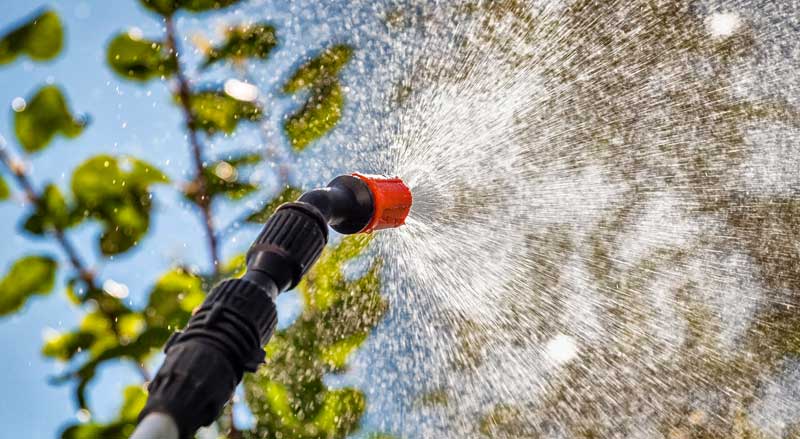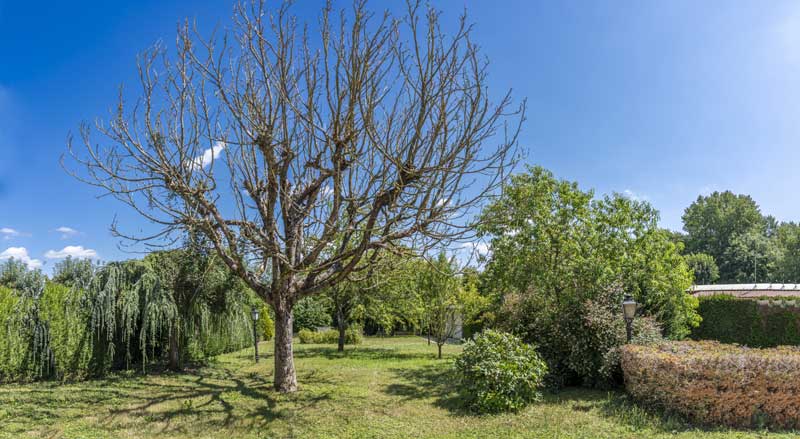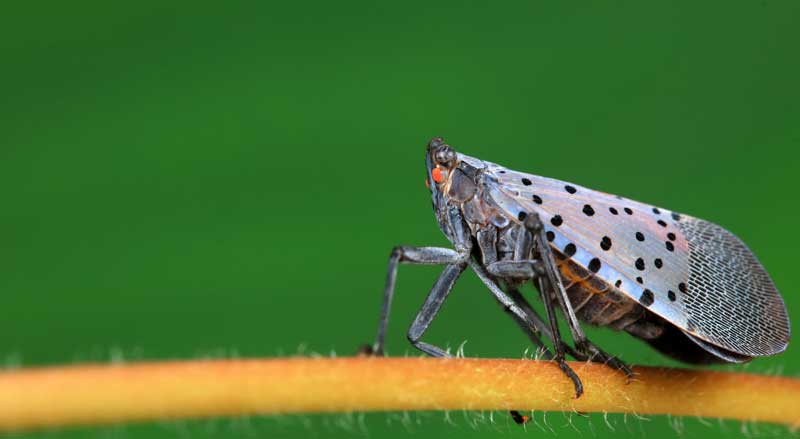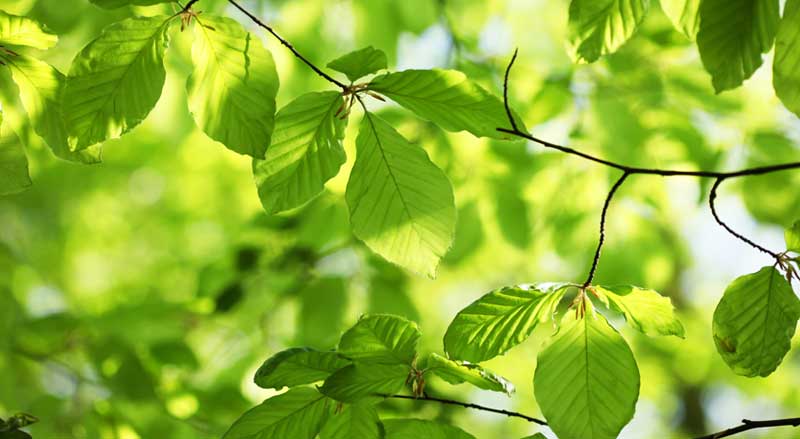There’s a lot to know about protecting your trees from pests in NJ. Here, we will discuss the three distinct types of insect pests:
- Sucking insects
- Boring insects
- Chewing insects
There are many insect pests in New Jersey that are harmful to trees and plants. Some are easy to see and identify, while others may be difficult to find.
You may also want to read about common tree diseases in New Jersey.
Sucking Insects
Sucking insects weaken plants by removing cell content or sap. They also inject toxic materials into the plant—and can transmit harmful diseases.
Many insects excrete excess sugar-water on the plant, which is called honeydew. It’s extremely sticky and causes mold to grow.
Aphids
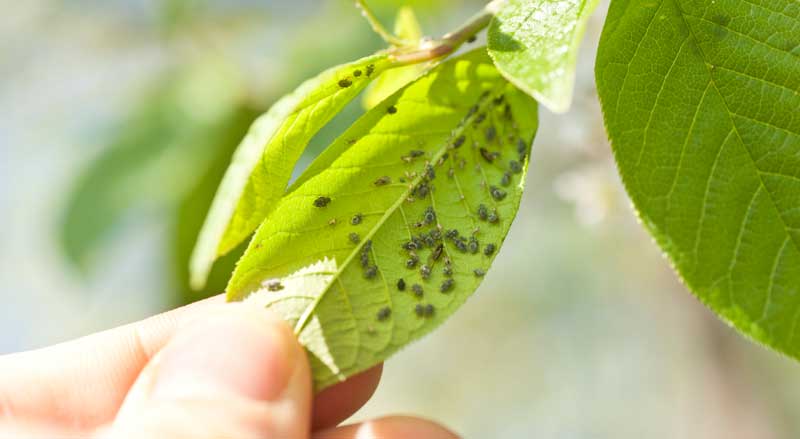
Aphids, plant lice, are common in New Jersey. They are extremely dangerous to trees and plants because they encourage the spread of dangerous plant viruses.
Aphids feed on the sap of trees and shrubs. The excreted honeydew is seen dripping from a tree’s canopy.
You may notice:
- Wilting, curling, yellowing leaves
- Poorly growing plants
- Dead plant shoots
Aphids first appear in the spring when their initial eggs hatch. You may need to remove aphids several times over the spring and summer since they can multiply quickly.
Aphids feed on flower buds, underside of leaves, or even roots.
Some species feed on needled evergreens and can kill a small shrub. These aphids have a shiny dark body with white spots, and a white stripe down their back.
How to identify aphids:
- Yellow or light-green color—occasionally they are black, red, brown, white, or grey
- Can be winged or wingless
- Measure 1/8” long
- Have six legs, antennae, a small, thin beak for sucking sap, and two tailpipes
Birds and some insects, such as ladybugs, are natural enemies of aphids and help keep the aphid population down. Ladybugs also eat mealy bugs and leafhoppers. They cause no harm to the plants.
Natural aphid repellants you can plant in your garden include:
- Garlic
- Chives
- Marigolds
- Dill
- Cilantro
You can remove aphids from strong shrubs and trees with a garden hose spray, or by hand on smaller plants.
Here’s more about identifying and combatting an aphid infestation.
Mealy Bugs
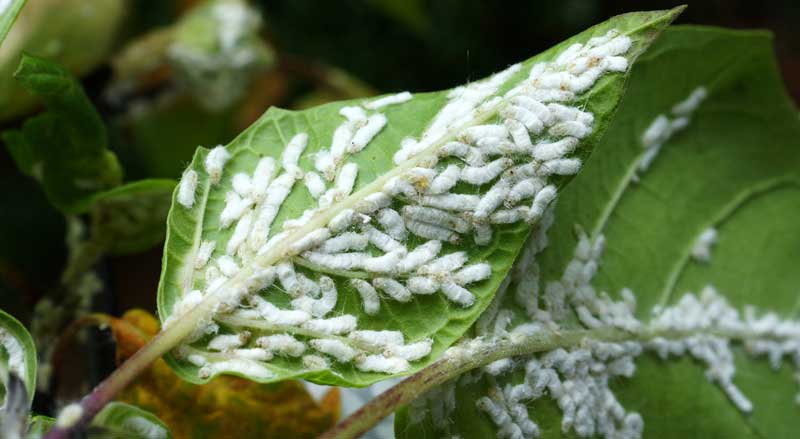
Mealy bugs often appear as cottony spots on plants.
They are difficult to control because of their protective covering. Even the eggs will have a waxy cover.
You can identify female mealy bugs by:
- A white, cottony, waxy covering
- Flat, soft bodies
- Oval shape
- Segmented body
Mealy bugs also produce damaging honeydew—a telltale sign of insect infestation.
Treat nearby plants with insecticidal soap or other insecticides.
Spotted Lanternfly
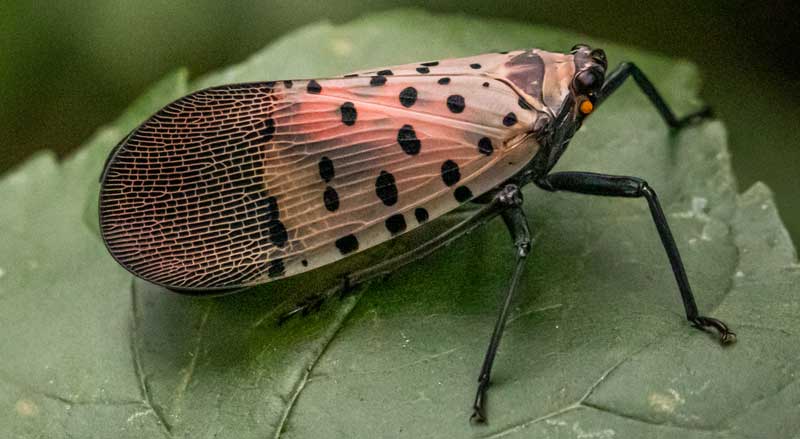
The spotted lanternfly uses its mouthpart to pierce and suck out sap from plants and trees.
This invasive insect was first brought into Pennsylvania from Asia, after which it spread to New Jersey.
While this annoying beetle is harmless to people and pets, it is dangerous for plants and trees.
Read about the spotted lanternfly, including what to do if you see it in your yard and spotted lanternfly treatment.
Thrips
Thrips are sucking insects that remove the cell contents of plants, flowers, and trees, causing stunted plant growth or poor fruit production.
It’s hard to see thrips with the naked eye because they’re so small. But tiny dark slivers, silvery speckles, and small white patches on leaves are a good sign they’re around. You will clearly see them if you shake the infested plant over a white paper.
Thrips are attracted to yellow and blue; purchase sticky cards in these colors to monitor their presence.
Natural pesticides can eliminate thrips from your garden.
Leafhoppers
Leafhoppers are sucking insects that transmit viruses to plants. They also excrete honeydew.
Plant leaves develop pale specks as the leafhoppers feed. Leaves eventually yellow and brown, curl and die.
Treat infestations with an organic insecticidal soap or neem oil spray.
Boring Insects
Boring insects tunnel under bark and feed in the wood. This eventually destroys the sap-conducting tissues that distribute nutrients and water throughout the tree. This causes parts of a tree, or even a total tree, to die.
Emerald Ash Borer
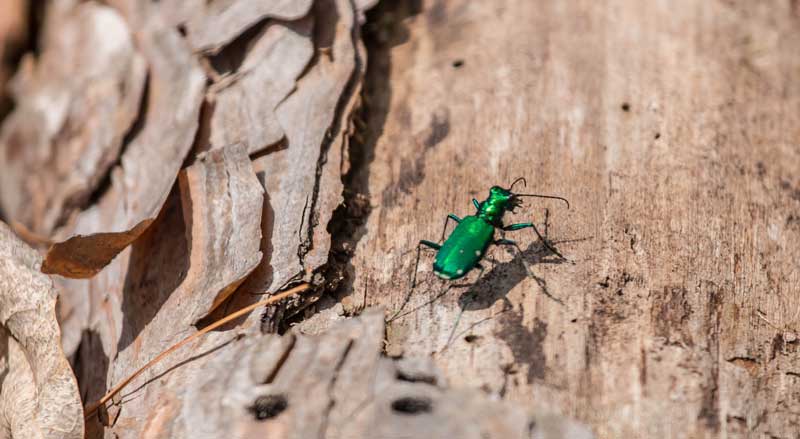
The emerald ash borer is an extremely dangerous insect pest that has been in the US since 2002 and in New Jersey since 2014. The insect feeds on ash trees and has already destroyed millions of US trees.
A tree with an emerald ash borer infestation will die quickly. These large trees can suddenly fall over—causing human and pet loss and property destruction.
Here you will find all you need to know about the emerald ash borer, including what you can do to protect your precious ash trees.
Bark Beetles
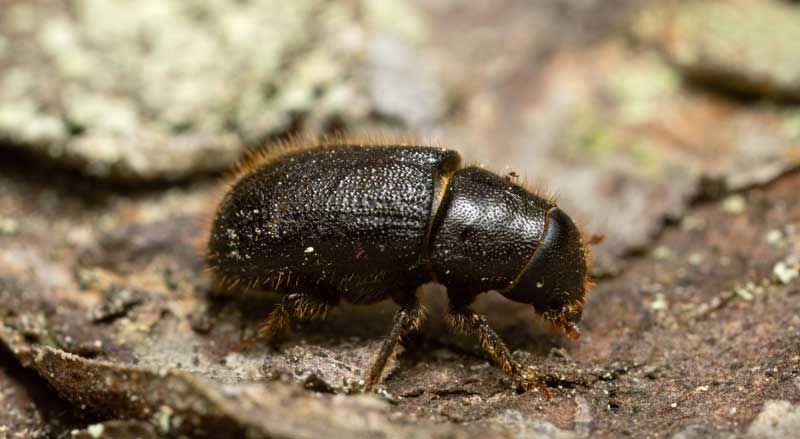
Bark beetles lay eggs in the inner bark of a tree. The larvae feed on the living tree tissue and destroy the tree’s ability to transport water and nutrients.
Bark beetles are less than ¼” long and have hard protective bodies—resembling a coffee bean in color and shape.
Spray trees with insecticides to prevent future infestation.
Chewing Insects
Chewing insects consume the stems, roots, leaves and flowers of plants. They depend entirely on this plant tissue to develop.
Gypsy Moth
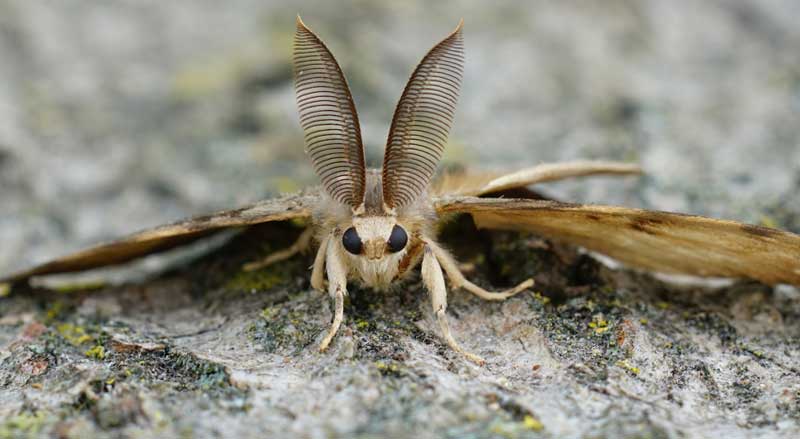
The gypsy moth is one of the most, if not the most destructive pest in NJ forests.
Public agencies work to contain the gypsy moth infestation in New Jersey. Aerial spray treatments protect both residential and recreational areas alike.
The gypsy moth female is creamy white and has a wingspan of almost two inches. But this moth doesn’t fly. She spends her time on tree bark. Nearby there’s usually a furry egg mass, and a smaller brown male moth.
Gypsy moth infestations are controlled by the Bacillus thuringiensis kurstaki bacteria (BtK) being consumed by Gypsy moth larvae. Agencies spray it right after the eggs hatch.
Is shedding bark a concern? Find out here.
Protect your precious trees. Have Trees Unlimited check your landscape for dangerous insect pests.

